
[Alert] Ancient Tonic Found to Reduce Parkinson’s Disease Risk
- A decade of work comes to fruition with this medical breakthrough. Find out more…
- Discover how to cut your risk of Parkinson’s Disease by a third while burning fat and combating inflammation
- Step-by-step instructions on how to make this ancient health tonic.
Editor’s Note: Today, Living Well is releasing our best solution for improving both your bone AND heart health. It’s our newest addition to our non-GMO supplement line, and it’s called D3+K2. D3+K2 delivers you the research-backed dose and forms of vitamin D3 and vitamin K2 – the two best natural ingredients shown in human studies to help support bone strength and help reverse arterial stiffness. If you want to maintain a healthy heart, flexible arteries, and strong bones, this is the one solution you need. Click here for more information and secure your supply.
If you are a Living Well Daily Insider, you automatically qualify for 20 percent off your order!
Dear Reader,
Parkinson’s disease is slow-developing yet progressive neurological disorder.
Most patients experience their first symptoms around the age of 60 or older, and they can be as benign as a barely noticeable tremor in the finger or hand.
However, as the disease progresses, the symptoms can progress to serious difficulties in speaking, locomotion, coordination, and balance.
Every year, over 60,000 Americans are diagnosed with Parkinson’s disease.
But the numbers only start here.
Currently, there are as many 1 million Americans suffering from Parkinson’s disease and an estimated 10 million people worldwide.
And these numbers don’t include the thousands of cases that go undetected.
Plus, Parkinson’s comes with a hefty price tag — the combined direct and indirect costs of Parkinson’s are an estimated whopping $25 billion annually in just the U.S.1
Recently, Australian researchers at La Trobe University in Melbourne made an unparalleled advancement in Parkinson’s disease research and diagnosis.
With funding from the Michael J. Fox Foundation for Parkinson’s Research, the team of scientist led by microbiology professor Dr. Paul Fisher developed the first blood test that can determine if a patient has Parkinson’s disease. We will give you the details in just a bit.
With this new discovery, medical providers will be able to speed up diagnosis of the neurological disorder and implement crucial treatments earlier, which could improve countless lives and may even help reduce costs.
And while this test is great news for early medical intervention, there is a natural solution that can help reduce the risk of Parkinson’s — one that has been used for centuries as a health booster.
We will reveal this health tonic, how it can protect you from Parkinson’s disease, and how to make it in a moment.
Let’s talk about this blood test first…
![]() A Decade’s Discovery
A Decade’s Discovery
The new blood test detects the abnormal blood cells that cause Parkinson’s disease. And since there is no cure for Parkinson’s currently, results from this test will permit patients to receive treatment quickly — hopefully, before brain damage starts.
Fisher had this to say about his team’s revolutionary discovery:
Early diagnosis and treatment could enable better outcomes and greater quality of life for people with the condition, which will be of great benefit to sufferers and their families.2
The scientists’ work is based in work started over 10 years ago when they discovered “alarms” were switched on in cells. These alarms were suspected to be liable for Parkinson’s and other incurable conditions that have faulty mitochondria.
When unusual activity occurs in cells with diseased mitochondria, it can trigger movements that may cause damage to vital brain cells.
Fisher and his team will continue their blood cell research in hopes of uncovering information that could eventually lead to a cure for Parkinson’s.
While this is great news for folks who are already suspected to suffer from Parkinson’s, there is an easy and healthy way to reduce the likelihood of Parkinson’s disease by a third for folks who don’t have Parkinson’s.
So what is this Parkinson’s fighter?
![]() Power Plant of the Ancients
Power Plant of the Ancients
Yerba mate.
This South American plant is found in parts of Brazil, Paraguay, Argentina, and other South American countries. It’s been used by the native peoples of these regions for both social and medicinal practices for centuries, typically as a tea.
However, a study released in the Journal of the Neurological Sciences reveals that yerba mate also has a protective role in the development of Parkinson’s disease.
The study examined hospital records of those who drank yerba mate regularly. And after being matched with two controls and variables like smoking status and alcohol intake were considered, the research found yerba mate drinkers reduced their chances of suffering from Parkinson’s disease to just 63 percent.3
This means drinking yerba mate tea can reduce your risk of Parkinson’s by a third!
Researchers believe yerba mate’s bioactive compound content is one of the reasons why it’s an effective Parkinson’s preventative. These include xanthines, phenolics, theobromine, and caffeine.
While more research is needed, it’s a good idea to start incorporating yerba mate into your daily routine.
Plus, it has more health benefits!
Yerba mate is full of natural phenolic compounds and antioxidants (natural cancer-fighters and metabolism boosters). It’s also good for a quick pick-me-up, as it has a caffeine content equal to most coffees.4
Not to mention yerba mate signals the body to burn more fat, regulates blood sugar levels, and helps reduce inflammation related to obesity.5
While it can be enjoyed hot, the iced version can be refreshing treat as well.
This makes yerba mate a great choice for iced tea in the coming hot months of summer — you can quench your thirst while fighting Parkinson’s and enjoying other health benefits!
Here’s the best way to brew it…
![]() Get the Health Without the Grit
Get the Health Without the Grit
Yerba mate is a leafy and at times even dusty loose tea. This can make for a gritty and cloudy iced tea experience.
Chemex brewing yerba mate is a great way enjoy it and to accentuate its refreshing and earthy flavor while also preventing leaves and other small particles from swimming in your glass.
To do this, you are going to need the following items:
- 1 8-cup Chemex
- 1 8-cup Chemex filter
- 50 g loose yerba mate tea
- 40 oz. of just-boiled water
- 1 1-gallon tea pitcher.
Here’s how you do it:
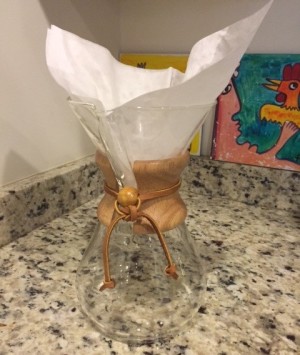
- Rinse the filter and place in the Chemex.
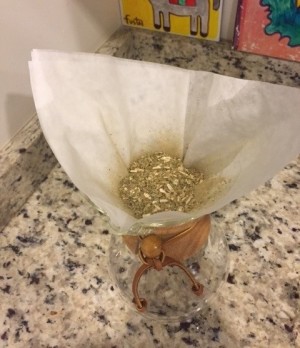
- Add tea.
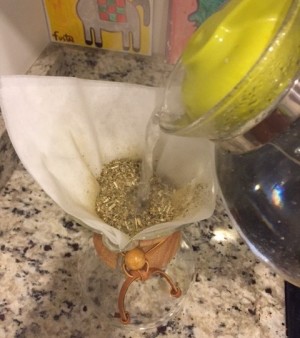
- Slowly pour 40 oz. of water over the tea.
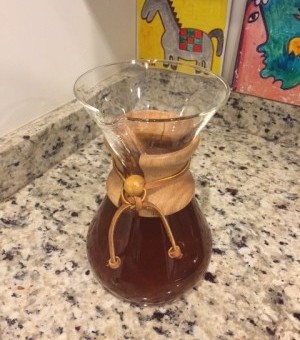
- Remove filter and allow to cool completely.
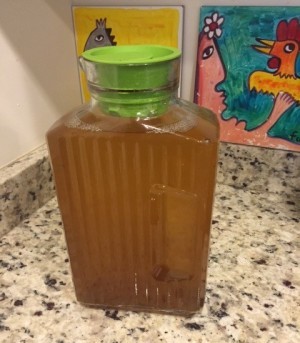
- Pour into gallon pitcher and add enough water to fill the gallon container.
This can be stored in the refrigerator for up to one week.
Yerba mate is available in most health food stores. To order it online, click here.
If you are interesting in a Chemex brewer (also great for coffee), click here.
Live well,

Natalie Moore
Managing editor, Living Well Daily
Sources
[2] Medical First: Blood Test Detects Parkinson’s Disease
[4] Yerba maté: Pharmacological Properties, Reasearch and Biotechnology
[5] The positive effects of yerba maté (Ilex paraguariensis) in obesity.
Written By Natalie Moore
Natalie Moore is a dedicated health researcher with a passion for finding healthy, natural, and science-based solutions. After a decade of direct healthcare experience in western and natural medicine, she was involved in public health research before joining Living Well Daily.
View More Free Articles
Stop Starving Yourself—"Forbidden" Weight Loss Secret WORKS
Completely cutting out the foods you love from your diet is a recipe for disaster. You know the drill—you swear off chocolate, potato chips, or whatever your weakness is, only to find yourself face-first in a family-size bag three weeks later, wondering what went wrong. Good news—science has finally caught up with common sense. A...
Why Your Muscles Are Your Brain's Best Defense
Forget expensive brain scans and head-scratching cognitive tests that make you feel like you’re back in school. Japanese researchers have stumbled onto something that could change how we screen for memory problems—and it’s so simple, you’ll wonder why nobody thought of it sooner. A quick, painless measurement you can get during a routine checkup might...
Four Carbs that Could Add YEARS to Your Life
You’ve likely been avoiding carbs like the plague. Health gurus, fitness influencers, and diet books have convinced you that carbs are the enemy—that they spike your blood sugar, pack on pounds, and fast-track you to diabetes. So you’ve eliminated bread, sworn off pasta, and feel guilty just touching a piece of fruit. But what if...
Upgrade from Bananas and Apples to These Powerhouse Fruits
I’m often asked which fruits are the best. So, let’s talk about it. I’ll cut right to the chase: berries win this contest hands down. If you’re limiting your options to apples and bananas, you’re missing out on a universe of superior antioxidant power. Those everyday fruits are like bringing a knife to a gunfight...
The REAL Reason Americans are Getting “Fatter”
You’ve heard it a thousand times: “Americans are getting fatter because we’re lazy.” We sit at desks all day. We binge-watch Netflix instead of hitting the gym. We’ve traded physical labor for sedentary lifestyles. It’s a tidy explanation for why obesity has skyrocketed in developed countries. There’s just one problem—it’s completely wrong… A groundbreaking Duke...
Mailbag: Room Won't Stop Spinning? Do THIS First
“I’m dealing with vertigo issues, lightheadedness, and dizziness. As recently as this last Saturday I had multiple occurrences throughout the day. Is there anything I can do for this? I’m 69 and in good health. I work out 4 to 5 times a week.” —Spinning Hi Spinning, When patients approach me with similar complaints, I...
Hidden Number Secretly Sabotages Male Performance
Guys (and gals that love them), we should talk. You know how we’ve always been told that bedroom troubles are just part of getting older—that we just need to live with them? Well, it turns out that’s not true. Scientists recently wrapped up a six-year study that followed over 100 healthy men, and the findings...
Shocking Study Links Kids' Snacks to Dangerous Early Puberty
Kids are growing up in a world vastly different from the one we knew. Back in our day, if a child wanted something sweet, it was a piece of candy or a homemade cookie. Today’s kids are surrounded by products filled with artificial sweeteners that didn’t even exist when we were raising our own children....
Outdated Vitamin Guidelines Put Your Brain at Risk
If you’re like most people, you probably don’t think twice about vitamin B12—until your doctor mentions it during a routine blood test. But new research published in the Annals of Neurology suggests we need to pay closer attention to this crucial nutrient—especially as we age. Turns out, current guidelines for this essential nutrient might be...
The TRUTH About Supplement "Liver Dangers" REVEALED
There’s been a lot of buzz lately about liver damage from supplements—so, let’s talk about it. Reports of supplement-induced liver injuries have some folks wondering, “Could my natural remedy actually be harming me?” But before you toss all your supplements in the trash, let’s separate fact from fear—and talk about how to use supplements safely....









